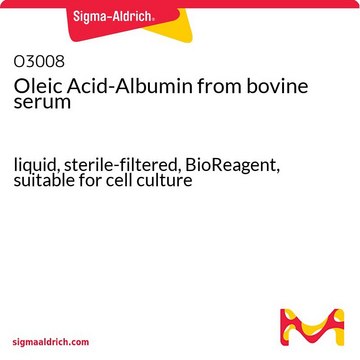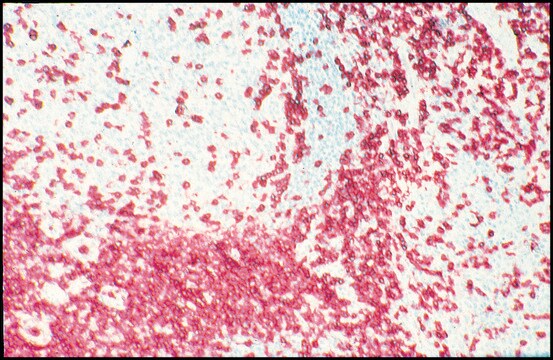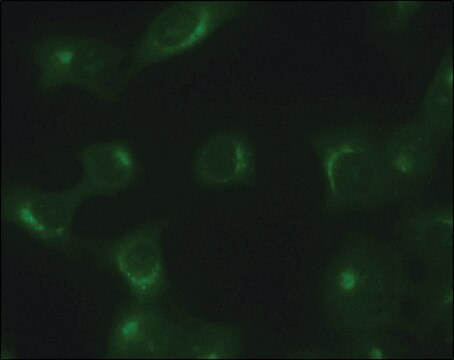CWA-1064
Anti-Human CD3ε (APA1/1) ColorWheel® Dye-Ready mAb
for use with ColorWheel® Dyes (Required, sold separately)
About This Item
Productos recomendados
origen biológico
mouse
Nivel de calidad
forma del anticuerpo
purified antibody
tipo de anticuerpo
primary antibodies
clon
APA1/1, monoclonal
Línea del producto
ColorWheel®
Formulario
lyophilized
mol peso
calculated mol wt 23.15 kDa
reactividad de especies
human
reactividad de especies (predicha por homología)
mouse
envase
antibody small pack of 25 μL
características de los productos alternativos más sostenibles
Waste Prevention
Designing Safer Chemicals
Design for Energy Efficiency
Learn more about the Principles of Green Chemistry.
sustainability
Greener Alternative Product
técnicas
flow cytometry: suitable
isotipo
IgG1
secuencia del epítopo
C-terminal half.
Nº de acceso Protein ID
Nº de acceso UniProt
compatibilidad
for use with ColorWheel® Dyes (Required, sold separately)
categoría alternativa más sostenible
, Aligned
Condiciones de envío
ambient
temp. de almacenamiento
2-8°C
modificación del objetivo postraduccional
unmodified
Información sobre el gen
human ... CD3E(916)
Descripción general
Especificidad
Inmunógeno
Aplicación
Evaluated by Flow Cytometry in Jurkat cells.
Flow Cytometry Analysis (FC): Staining of one million Jurkat cells was performed using 5 μL of a 1:1 mixture of Cat. No. CWA-1064, Anti-Human CD3e (APA1/1) ColorWheel® Dye-Ready mAb and Cat. No. CWD-PE ColorWheel® Antibody-Ready Phycoerythrin (PE) Dye or an equivalent amount of PE-conjugated Mouse IgG1 isotype control.
Note: Actual optimal working dilutions must be determined by end user as specimens, and experimental conditions may vary with the end user
Compatibilidad
Descripción de destino
Forma física
Reconstitución
Almacenamiento y estabilidad
Información legal
Cláusula de descargo de responsabilidad
¿No encuentra el producto adecuado?
Pruebe nuestro Herramienta de selección de productos.
obligatorio pero no suministrado
Código de clase de almacenamiento
13 - Non Combustible Solids
Clase de riesgo para el agua (WGK)
WGK 3
Punto de inflamabilidad (°F)
Not applicable
Punto de inflamabilidad (°C)
Not applicable
Elija entre una de las versiones más recientes:
Certificados de análisis (COA)
¿No ve la versión correcta?
Si necesita una versión concreta, puede buscar un certificado específico por el número de lote.
¿Ya tiene este producto?
Encuentre la documentación para los productos que ha comprado recientemente en la Biblioteca de documentos.
Nuestro equipo de científicos tiene experiencia en todas las áreas de investigación: Ciencias de la vida, Ciencia de los materiales, Síntesis química, Cromatografía, Analítica y muchas otras.
Póngase en contacto con el Servicio técnico





